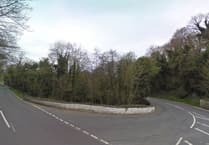Ash dieback disease could eliminate ’90% of all ash trees’ in the island over the next ’five to six years’.
The disease is caused by fungus which blocks the water transport system in the tree and as a result the leaves wilt and die.
Ben Brooker, trustee at Isle of Man Woodland Trust and an arborist, told the Examiner the situation with ash trees is ’an emergency’.
He said: ’It’s everywhere, we’re struggling to find ash trees that don’t have it.
’It’s going to change the landscape.’
Ash is the second most abundant type of tree in the Isle of Man, the first being sycamore and third elm.
Mr Brooker continued: ’This impact is probably going to be within the next five to six years, we’re already seeing it. It’s pretty major, it’s going to happen pretty rapidly and from an ecological point of view, it’ll be in the blink of an eye.’
Ash dieback disease doesn’t cause a direct risk to the public but what follows after it takes effect does.
He added: ’There’s no short term risk of the trees falling over, it’s not a wood decaying fungi on the trunk.
’You can have a tree that’s dead from ash dieback disease and it could stand there quite happily but then you’ll have the other pathogens from the other fungi, for example, honey fungus, which will jump in and dose the ones that munch on the wood shortly after and in the space of a few months could degrade all the root structure and then the tree could fall over.’
Many ash trees line the roadsides and carriageways so could pose a danger to passing pedestrians and vehicles.
The arborist said: ’If you think about all these massive ash trees that we’ve got on the roadsides, and there’s lots of them, tens of thousands of them, those ones that are dying now and are going to be dead on their feet in the next 12 months.
’It’s not just a case of we can lose them at our leisure, there’s going to have to be really significant intervention.’
Currently, the government does not have a strategy to tackle ash dieback disease.
It has said any strategy or plan to ’tackle’ it is just about ensuring no damage or injury occurs as a result of dead or dying trees.
The Department of Environment, Food and Agriculture (DEFA) continues to monitor the disease and is working with the United Kingdom and European agencies to keep up to date with developments.
The DEFA has a tree safety management strategy considering the risk from all trees, not just ash.
They struggle to control the spread of the disease due to the practical problem of collecting all the dead leaves which may end up producing spores, plus spores disperse naturally via wind over tens of miles.
The DEFA currently has no plans to execute a disease control programme because of these factors.




.jpeg?width=209&height=140&crop=209:145,smart&quality=75)